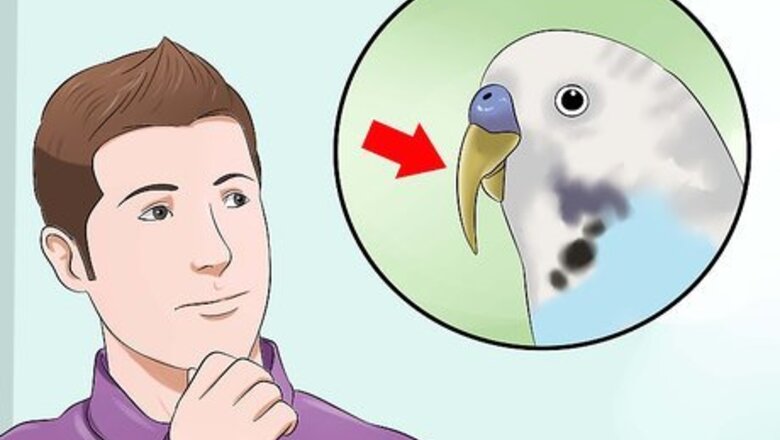
views
- Take your bird to an avian vet if your bird’s beak has changed shape, the top of the beak has grown down over the bottom, or it’s broken off on 1 side.[1]
- Encourage natural beak wear by feeding your bird premium pelleted foods and vegetables like broccoli, cabbage, and asparagus.
- Give your bird chew toys like wooden blocks, plastic beads, or a lava rock. Then, add another perch made out of cement, pumice, or minerals.
Visiting a Vet

Determine that your bird's beak needs a trim. An average beak of a well cared for bird does not need trimming, as it will wear down naturally from ordinary chewing. If you notice that your bird's beak has changed shape, that the top of the beak is growing far down over the bottom, or that the beak has been broken off on one side, take your bird to the vet for trimming and shaping. Trimming can cause your bird pain and trauma if done improperly. It should never be done for cosmetic reasons.
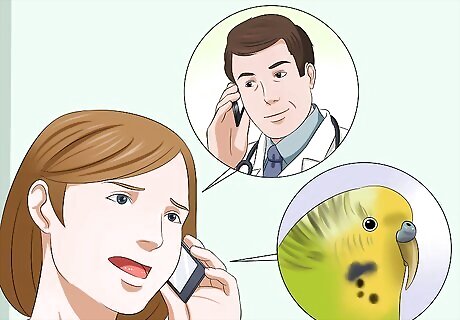
Locate an avian vet. Not all vets are qualified to trim a bird's beak. Search the Association of Avian Vets directory to find an avian vet near you. Call ahead to ask if the vet has worked with birds of your pet's species before. Bring an old photo of your bird with a healthy beak, or bring a photo of other birds of this species. Though a good vet will be able to recognize the parts of a beak that do not want to be trimmed, it is helpful for the vet to have an idea of what the beak should look like before the trimming starts. Parrot's lower beaks will be trimmed straight across. Cockatoos and cockatiels have beaks with pointed ends and scooping middles, so their lower beaks should not be ground straight across.
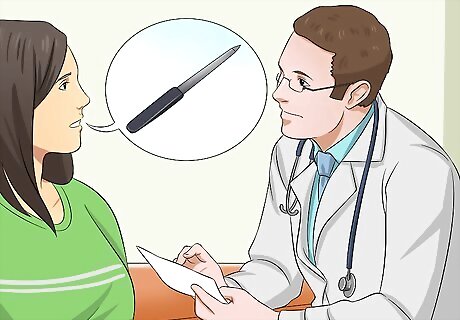
Ask what tools will be used. Your vet should use a grinding tool to file away the excess beak. If the vet uses a high-speed drill such as the Dremel tool, they'll use it on a low setting with regular breaks to make sure the beak doesn't overheat. Your vet may also use a nail file, which is great for trimming away flaky patches on the surface of the beak. Clippers should be avoided when possible. If a speculum is to be inserted in your bird's beak, ask that it not be metal. Birds sometimes bite down during beak trims, and metal can damage the beak. A dog chew toy may be used instead, provided it is the right size. Your bird will not normally need to be anesthetized during this procedure.

Watch the procedure. Make sure the vet cleans your bird's beak with disinfectant first. If the vet is using a grinding tool, ask for a fresh head to be put on it. Diseases can be transferred bird to bird from re-used grinding heads. Expect the beak trim to take about 20 minutes. Your vet or vet team will restrain the bird gently with gloved hands. In some cases, the top half of your bird's beak will be tucked into the lower half to get it out of the way. The vet should slowly trim the beak until she can see white dots on the surface. Trimming past these will hurt the bird. The beak should be trimmed until the biting surface is level, or it will become distorted and cause further problems for your bird.

Give your bird time to recover. A trim should not hurt your bird, but will probably be stressful. Take your bird home and place it in a place it is used to. Make calming noises, but don't crowd it with too much cuddling. Leave water and food for it, and keep admirers away for at least a day. If your bird has somehow been hurt during the procedure, ask your vet how you can help your bird recover. A bird with a bleeding or cracked beak will need to stay at the hospital. If your bird experienced pain, the beak may remain sore for a few days. Soften foods with water before serving, and offer fruits, vegetables, and sprouted seeds that require less chewing.
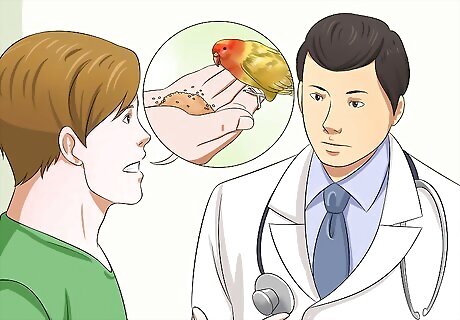
Get a diagnosis. There is normally a reason for a bird's beak to overgrow. Tell your vet everything your bird eats, what you keep in the cage, and where the bird's cage is situated. Overgrowth can be caused by infections, liver disease, nutritional imbalances, and lack of grooming aids. Take your doctor's advice. For instance, if the vet says your bird has liver disease, you will need to seriously change your bird's diet if it is to survive. A bird with liver disease needs to eat a rich in fiber, low in fat diet without too much protein. Seeds should be avoided, or only served sprouted.
Encouraging Natural Beak Wear

Feed your bird well. Don't rely on bird seed, which is too fatty and does not require your bird to use her beak. Buy a premium pelleted food, and feed your bird lots of fresh vegetables (such as broccoli, cabbage, garlic, collards, asparagus) and occasional fresh fruit. Feed your bird a few almonds each day to encourage chewing. Learn if your bird is a florivore, omnivore, granivore, frugivore, or nectarivore. Though diet will depend on breed, pelleted food should typically be 65-80% of the diet. Vegetables should make up 15-30%, and the remainder can be seeds and fruits. If your bird is accustomed to seeds, try sprouting the seeds to help your bird transition to vegetables. The fat content will lower, and the texture will be more vegetable-like. Birds that have had too much fat in their diets are at risk for developing liver disease, which can cause beak overgrowth. These birds need vegetables, as well as citrus peel, egg yolks, unprocessed grains, and turmeric to detoxify.
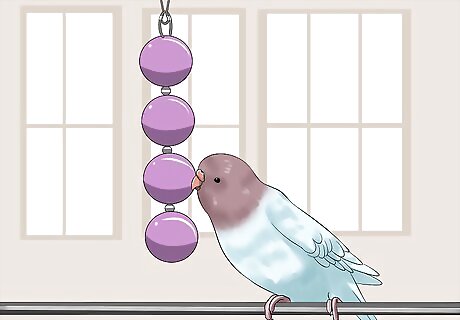
Buy your bird chew toys. Buy chew toys for your bird. You can buy build-your-own toys that let you string rope with mineral pieces, wooden blocks, plastic beads, and pieces of real coconut. Put several in the cage at once, and rotate them out so that your bird doesn't get bored. If you notice she chews some more than others, buy more of those. Buy a lava rock. You can hang a lava rock in your bird's cage, or attach it to the side. These are great for your bird to wear her beak naturally. Hide food in a chew toy. Buy a shreddable toy that you can hide treats in. Your parrot will trim her beak shredding up the toy. Check rope toys frequently for fraying. Remove frayed rope, as this can tangle around your bird's toes.

Install a special perch. Your bird will wear her own nails and beak into good condition if she has a cement, pumice, or mineral perch to sit on. After she eats, she will wipe her beak on the perch, thus sharpening and trimming it. Buy a perch that is designed specifically for your kind of bird. For instance, find a perch that will transmit essential minerals from your bird's part of the world. Do not replace all your bird's perches with conditioning perches, as they are less comfortable for your bird to sit on for long periods. Avoid sandpaper perches.




















Comments
0 comment